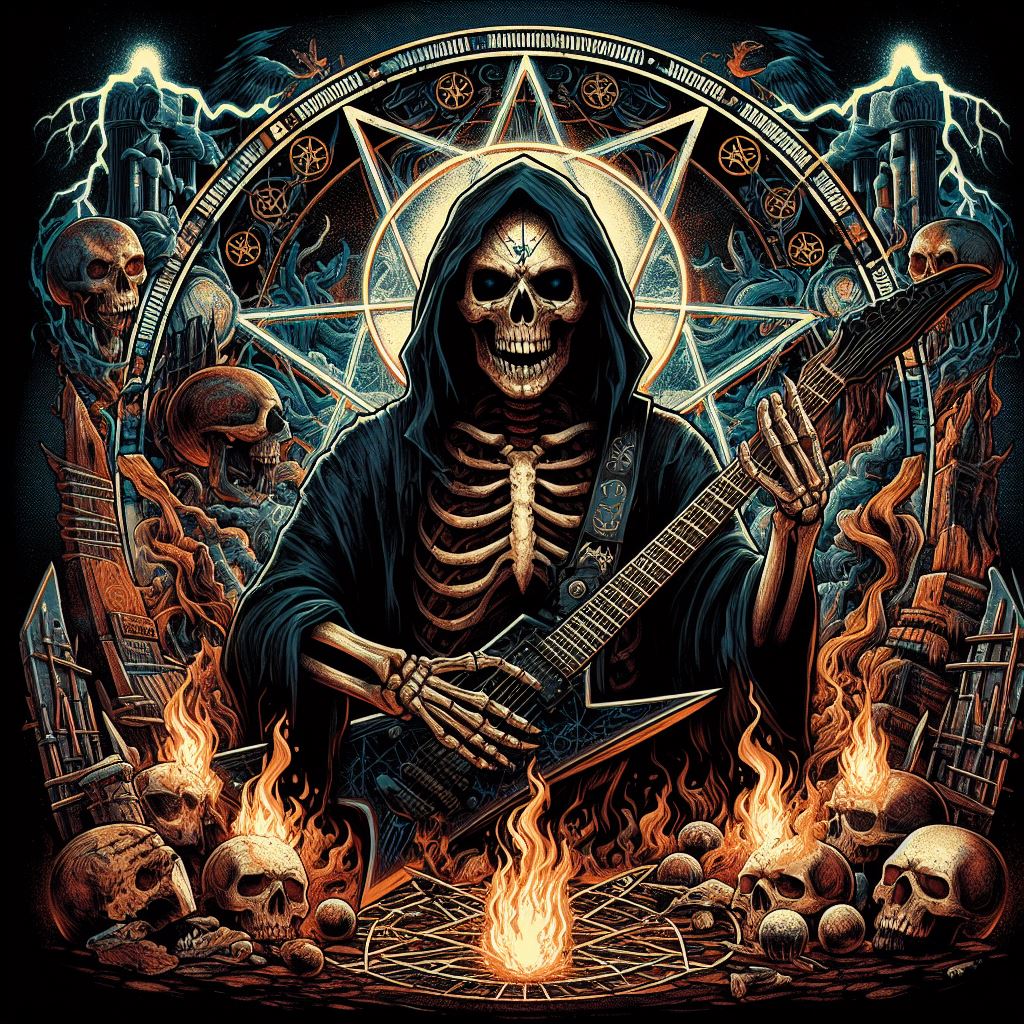In Flames, a name synonymous with melodic death metal, boasts a rich history that stretches back to the early 1990s. Hailing from Gothenburg, Sweden, a city that birthed a unique brand of heavy metal, In Flames, alongside bands like At the Gates and Dark Tranquillity, left an undeniable mark on the genre.
Born from a Desire for Melody (1990-1995)
In 1990, guitarist Jesper Strömblad, then a member of the death metal band Ceremonial Oath, craved a more melodic outlet for his musical creativity. Thus, In Flames was born as a side project. Their debut album, “Lunar Strain” (1994), showcased a blend of death metal aggression with catchy melodies and clean vocals, a sound that would become their signature. The early years were marked by a revolving cast of musicians, with Strömblad relying heavily on session players.
Solidifying the Lineup and Finding Their Sound (1996-2001)
By 1995, In Flames yearned for stability. Björn Gelotte joined as the permanent drummer, solidifying the rhythm section. The search for a full-time vocalist led them to Anders Fridén, whose clean vocals and occasional harsh growls perfectly complemented Strömblad’s songwriting. This solidified lineup unleashed “The Jester Race” (1996), a landmark album that solidified their melodic death metal sound. Tracks like “The Jester Race” and “Blood is Red” became fan favorites, showcasing their ability to weave melody into a pummeling metal framework.
The albums that followed, “Colony” (1999) and the critically acclaimed “Clayman” (2000), cemented their place at the forefront of the melodic death metal scene. “Clayman” boasted a more refined sound, with anthemic choruses like “Pinball Machine” and “Only for the Weak” pushing their commercial appeal without sacrificing their metal roots.
Evolution and New Horizons (2002-Present)
The new millennium ushered in a period of evolution for In Flames. “Reroute to Remain” (2002) marked a shift towards a more accessible sound, incorporating alternative rock influences and cleaner vocals. This change divided their fanbase, with some applauding their growth and others lamenting the departure from their earlier brutality.
Albums like “Soundtrack to Your Escape” (2004) and “Come Clarity” (2006) solidified this new direction, with tracks like “Take This Life” and “The Eleventh Hour” achieving mainstream radio success. The band continued to experiment, incorporating elements of electronica and industrial metal into their sound on albums like “A Sense of Purpose” (2008) and “Siren Charms” (2013).
Despite lineup changes, including the departure of founding member Strömblad in 2010, In Flames remained a force to be reckoned with. They continued to tour extensively and release well-received albums like “Battles” (2016) and “I, the Mask” (2019). Their latest album, “Foregone” (2022), showcases a return to a heavier sound, a nod to their melodic death metal roots while still retaining elements of their modern evolution.
In Flames’ legacy is undeniable. They are pioneers of melodic death metal, influencing countless bands. Their willingness to experiment and evolve has kept them relevant for over three decades, ensuring their place as metal mainstays.

Leave a Reply
You must be logged in to post a comment.